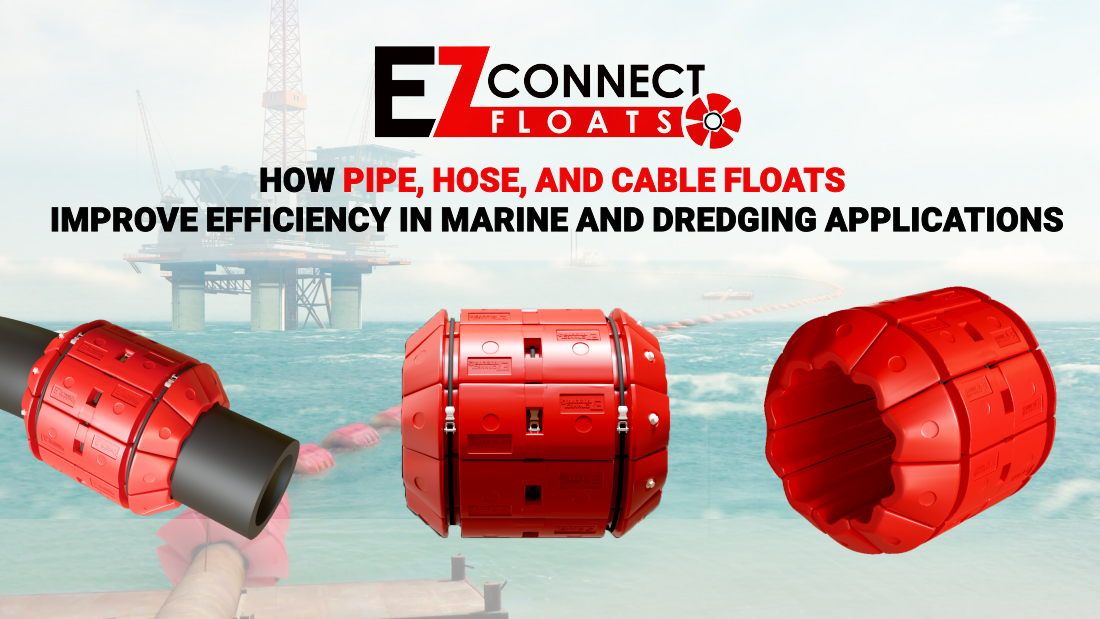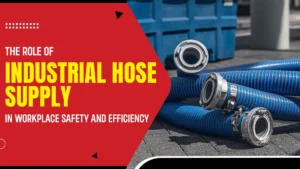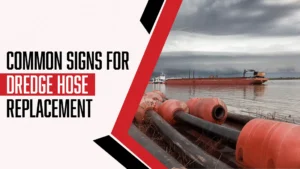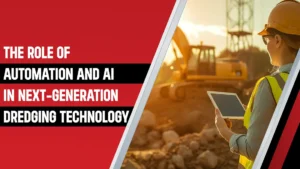
Enhancing Efficiency in Marine & Dredging Operations
The efficiency of marine and dredging operations hinges on the seamless coordination of various components, with the buoyancy and stability of pipes, hoses, and cables playing a pivotal role. This comprehensive exploration explores how pipe, hose, and cable floats enhance efficiency across industries, from offshore oil extraction to environmental restoration projects.
What Are Marine Applications?
Marine applications encompass various activities and industries that operate in or depend on aquatic environments. Here are some of the different types of marine applications:
- Offshore Oil and Gas Exploration and Production: Exploring, drilling, and extracting oil and gas reserves beneath the ocean floor. It includes offshore platforms, drilling rigs, subsea pipelines, and support vessels.
- Shipping and Maritime Transport: This includes the transportation of goods, commodities, and passengers by sea. It encompasses container shipping, bulk carriers, tankers, cruise ships, ferries, and other types of vessels.
- Fisheries and Aquaculture: This involves the commercial harvesting fish and other marine organisms and cultivating aquatic plants and animals in controlled environments such as fish farms, hatcheries, and aquaponics systems.
- Marine Conservation and Environmental Protection: This includes efforts to protect and preserve marine ecosystems, biodiversity, and natural resources. It encompasses marine protected areas, habitat restoration projects, pollution prevention measures, and marine wildlife conservation initiatives.
- Coastal and Port Infrastructure: This involves the development, construction, and maintenance of coastal protection structures, ports, harbors, jetties, breakwaters, and navigation channels to facilitate maritime commerce, shipping, and coastal defense.
- Marine Renewable Energy: This includes the harnessing of renewable energy resources such as wind, waves, tides, and currents to generate electricity. It encompasses offshore wind farms, tidal energy installations, wave energy converters, and ocean thermal energy conversion systems.
- Marine Research and Exploration: This involves scientific research, exploration, and mapping of the marine environment, including oceanography, marine biology, geology, and archaeology. It encompasses research vessels, underwater vehicles, remotely operated vehicles (ROVs), and autonomous underwater vehicles (AUVs).
- Marine Tourism and Recreation: This includes recreational activities and tourism-related services such as boating, sailing, diving, snorkeling, fishing charters, marine wildlife tours, and beach resorts.
- Marine Engineering and Construction: It involves designing, constructing, and maintaining marine structures and infrastructure, such as offshore platforms, pipelines, bridges, piers, docks, and marinas.
- Marine Defense and Security: This includes military and law enforcement activities aimed at safeguarding maritime borders, protecting shipping lanes, combating piracy, smuggling, and illegal fishing, and ensuring maritime safety and security.
How Floats Enhance Efficiency in Marine Applications
Pipe, hose, and cable floats enhance efficiency across marine applications by providing buoyant support to essential infrastructure components. Here’s how they contribute to efficiency in different marine applications
Offshore Oil and Gas Exploration and Production:
- Pipe floats support subsea pipelines, reducing drag and friction during oil and gas transportation from offshore rigs to onshore facilities. This ensures a smooth flow of hydrocarbons, optimizing extraction and transportation processes.
- Cable floats buoyantly support underwater power cables, protecting them from damage and degradation. This facilitates reliable energy transmission from offshore installations to onshore grids, minimizing transmission losses and ensuring continuous power supply.
Shipping and Maritime Transport:
- Pipe floats support underwater pipelines and mooring lines, reducing the risk of damage to vessels and port infrastructure during docking and berthing operations.
- Hose floats support discharge hoses used for bunkering and fuel transfer operations, minimizing downtime and optimizing vessel turnaround times in ports and terminals.
Fisheries and Aquaculture:
- Hose floats buoyantly suspend hoses used for water circulation, aeration, and nutrient delivery in fish farms and hatcheries, optimizing growing conditions for aquatic organisms and maximizing production yields.
- Cable floats support underwater sensor cables and monitoring equipment, facilitating real-time data collection and analysis for aquaculture management and environmental monitoring.
Marine Conservation and Environmental Protection:
- Pipe and hose floats support containment booms and barriers used in oil spill response and pollution control efforts, minimizing the spread of contaminants and mitigating environmental damage.
- Cable floats buoyantly support underwater marine research and environmental monitoring cables, ensuring reliable communication and data transmission for scientific studies and conservation initiatives.
Coastal and Port Infrastructure:
- Pipe floats support underwater pipelines used for seawater intake and outfall systems, optimizing the efficiency of coastal desalination plants, power plants, and industrial facilities.
- Hose floats buoyantly suspend hoses for dredging and sand replenishment operations, facilitating shoreline protection and coastal erosion control measures.
Marine Renewable Energy:
- Cable floats support underwater power cables connecting offshore wind turbines, tidal energy converters, and wave energy devices to onshore grids, ensuring efficient energy transmission and maximizing renewable energy generation.
Types of Dredging Applications
- Navigation Dredging: Navigation dredging is a crucial activity aimed at maintaining safe and navigable waterways for maritime transportation. It involves the removal of sediment, silt, and debris from harbors, channels, shipping lanes, and navigational waterways. Dredging these areas ensures sufficient water depths, allowing ships, barges, and other vessels to transit smoothly and efficiently. Navigation dredging is pivotal in facilitating the movement of goods, passengers, and commodities, supporting economic growth and international trade.
- Port and Harbor Maintenance: Port and harbor maintenance dredging regularly removes accumulated sediment to maintain designated depths within ports, harbors, and marinas. This dredging is essential for preventing sedimentation and ensuring access to port facilities for vessels of varying sizes. Ports and harbors can accommodate commercial shipping, recreational boating, and maritime activities by dredging berths, basins, turning basins, and entrance channels. Effective maintenance dredging is key to preserving the functionality and efficiency of port infrastructure.
- Coastal Protection and Beach Nourishment: Coastal protection and beach nourishment dredging involve strategically placing sand, gravel, or sediment on eroded beaches and shorelines. This practice helps restore natural habitats, prevent coastal erosion, and enhance resilience against storms and sea-level rise. Coastal dredging projects contribute to the preservation of coastal ecosystems, the protection of coastal infrastructure, and the promotion of recreational and tourism activities along the shoreline.
- Environmental Remediation: Environmental dredging addresses contamination and pollution in water bodies by removing contaminated sediment, pollutants, and hazardous materials. This dredging is essential for restoring water quality, mitigating ecological impacts, and protecting human health. Environmental dredging projects often target industrialized areas, harbors, and estuaries affected by historical pollution from industrial activities, shipping, and urban runoff.
- Flood Control and Water Management: Flood control and water management dredging focus on improving hydraulic conveyance, preventing flooding, and enhancing water storage capacity in rivers, lakes, reservoirs, and drainage channels. By removing sediment, vegetation, and debris, these dredging activities help maintain flood control infrastructure, manage water resources, and mitigate the impacts of floods and inundation events in flood-prone areas. Effective water management through dredging supports sustainable development and protects communities from water-related hazards.
- Mining and Aggregate Extraction: Mining and aggregate extraction dredging involves excavating and extracting sand, gravel, minerals, and other valuable materials from underwater deposits. These materials are used in construction, infrastructure development, and industrial applications. Mining and aggregate extraction dredging are common in rivers, lakes, coastal waters, and offshore environments where economically viable deposits are found. While providing essential resources, sustainable practices must be employed to minimize environmental impacts and ensure responsible resource management.
How Floats Enhance Efficiency in Dredging Applications
Navigation Dredging:
- Pipe floats support submerged pipelines used for sediment removal or discharge, ensuring they remain buoyant and adequately positioned throughout the dredging process.
- Hose floats suspend discharge hoses for pumping dredged material, minimizing drag and preventing hose entanglement or sinking.
- Cable floats buoyantly support underwater cables for communication, monitoring, or power supply, ensuring uninterrupted operation during dredging activities.
Port and Harbor Maintenance:
- Pipe floats provide buoyant support to underwater pipelines used for sediment removal or dredged material disposal, optimizing the efficiency of port and harbor maintenance operations.
- Hose floats buoyantly suspend discharge hoses for transferring dredged sediment, reducing resistance and facilitating efficient material transport within port facilities.
- Cable floats support underwater cables for data transmission, monitoring, or power supply, ensuring reliable connectivity and uninterrupted port operations.
Coastal Protection and Beach Nourishment:
- Pipe floats buoyantly support pipelines transporting sand, gravel, or sediment for beach nourishment projects, minimizing frictional resistance and optimizing material placement.
- Hose floats suspend discharge hoses for pumping sediment onto eroded beaches, ensuring efficient distribution and coverage of nourishment materials along the shoreline.
- Cable floats support underwater cables monitoring sediment transport or environmental parameters, providing real-time project optimization and management data.
Environmental Remediation:
- Pipe floats support containment booms and barriers used to isolate dredging areas or contain sediment plumes, minimizing the spread of contaminants during environmental dredging operations.
- Hose floats buoyantly suspend suction hoses or dredge pumps used for sediment extraction, reducing drag and improving the efficiency of sediment removal processes.
- Cable floats support underwater cables for environmental monitoring or pollution detection, enabling timely response and mitigation of potential environmental impacts.
Flood Control and Water Management:
- Pipe floats buoyantly support pipelines for dredging sediment from rivers, lakes, or reservoirs, ensuring efficient removal of sediment and vegetation to maintain water flow and storage capacity.
- Hose floats suspend discharge hoses for transporting dredged material to designated disposal sites, minimizing resistance and optimizing material transport during flood control operations.
- Cable floats support underwater cables for monitoring water levels, flow rates, or flood conditions, providing valuable data for flood forecasting, management, and response efforts.
Mining and Aggregate Extraction:
- Pipe floats support pipelines transporting dredged material or aggregate resources, ensuring efficient material extraction and transport operations.
- Hose floats suspend discharge hoses for pumping sand, gravel, or minerals from underwater deposits, minimizing drag and optimizing material recovery rates.
- Cable floats support underwater cables for monitoring dredging operations or equipment performance, enhancing safety and efficiency through real-time data acquisition and analysis.
Conclusion:
Pipe, hose, and cable floats are indispensable assets driving efficiency across a vast spectrum of marine and dredging applications. Their buoyant support to essential infrastructure components streamlines operations and minimizes downtime. It optimizes resource utilization across industries ranging from offshore oil extraction and maritime transport to fisheries, environmental protection, and coastal management. By seamlessly coordinating submerged pipelines, discharge hoses, and underwater cables, floats ensure the smooth execution of tasks, from offshore drilling to coastal protection and environmental remediation. As industries evolve, floats’ importance in enhancing efficiency and performance remains paramount, promoting sustainable practices and responsible stewardship of marine resources. Embracing innovation and collaboration, stakeholders can leverage floats to address emerging challenges, minimize environmental impact, and foster resilience in the dynamic maritime landscape, ensuring prosperity for generations to come.
Have Questions?
Get in touch with us now!
Related Blogs

The Role of Industrial Hose Supply in Workplace Safety and Efficiency
In high-stakes industries such as oil and gas, mining, manufacturing, dredging, and defense, industrial hoses serve as vital connectors in daily operations. Whether transferring hazardous

Common Signs For Dredge Hose Replacement
Dredge hose is an essential component in mining, oil and gas, and heavy industries, where it is used to transport materials such as sediment, slurry,

The Role of Automation and AI in Next-Generation Dredging Technology
Dredging technology has undergone a quiet but powerful transformation over the past decade. A purely mechanical process, which included heavy machinery, manual supervision, and reactive
